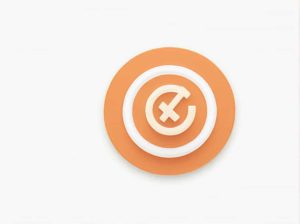In a sole proprietorship the business and the owner are legally the same entity. This means that a proprietor can withdraw goods from the business for personal use. However such withdrawals have accounting and tax implications that must be recorded properly to maintain financial transparency.
This topic explains the meaning accounting treatment journal entries and tax effects of a proprietor withdrawing goods for personal use.
What Does It Mean When a Proprietor Withdraws Goods for Personal Use?
A proprietor withdrawing goods for personal use means taking inventory from the business and using it for non-business purposes. This is common in retail manufacturing and wholesale businesses. Since these goods are not sold to customers they must be recorded appropriately in the books of accounts.
Examples of Personal Use Withdrawals
- A grocery store owner taking home food items from the shop.
- A clothing store owner using business stock for their personal wardrobe.
- A furniture manufacturer keeping a piece of furniture for their home.
Accounting Treatment of Goods Withdrawn for Personal Use
When a proprietor withdraws goods it is not considered a sale but a drawing or owner’s withdrawal. Since the business incurs a loss of inventory this withdrawal is recorded as a reduction in capital.
Key Accounting Considerations
- The withdrawal reduces the stock available for sale.
- No sales revenue is recorded since no external transaction occurs.
- The proprietor’s capital account is reduced by the value of the goods withdrawn.
Journal Entry for Goods Withdrawn for Personal Use
The standard accounting entry for goods taken for personal use is:
Debit: Drawings Account (Owner’s Withdrawals)
Credit: Purchases/Stock Account
Example Journal Entry
If a proprietor withdraws goods worth $1000 the entry would be:
Drawings Account Dr. $1000
To Purchases Account $1000
(Being goods withdrawn for personal use recorded)
Alternative Entry (If GST or VAT Applies)
If tax is applicable the entry is:
Drawings Account Dr. $1000
GST Payable Account Dr. $50 (if 5% GST applies)
To Purchases Account $1050
(Being goods withdrawn for personal use including tax)
Effect on Financial Statements
-
Balance Sheet:
- The capital account decreases because personal withdrawals reduce the proprietor’s stake in the business.
- Inventory decreases as stock is removed.
-
Profit & Loss Account:
- There is no direct impact on business profits but reducing inventory may affect cost calculations.
-
Cash Flow Statement:
- No cash movement occurs so it does not affect cash flow unless the goods are accounted for under expenses.
Tax Implications of Personal Withdrawals
Impact on Income Tax
- Since the goods are not sold no revenue is recorded.
- However tax authorities may still require the proprietor to account for such withdrawals as personal income in certain cases.
- The business cannot claim the cost of these goods as a business expense.
GST or VAT Considerations
- In some countries withdrawing goods for personal use is subject to GST/VAT since it is considered a self-supply.
- If the business has claimed input tax credit on these goods it may need to reverse the credit.
Example
If a business purchased goods worth $1000 and claimed 10% VAT the VAT credit must be reversed when goods are withdrawn for personal use.
How to Minimize Accounting Errors for Withdrawals
To ensure proper financial reporting:
- Maintain a Record: Keep a log of all personal withdrawals.
- Use Separate Accounts: Record personal withdrawals separately to avoid mixing business and personal expenses.
- Consult a Tax Professional: Tax treatment varies by country so professional advice ensures compliance.
Withdrawing goods for personal use is a common practice in sole proprietorships but it must be recorded correctly to avoid financial discrepancies. Proper accounting entries help maintain clear records and understanding the tax implications ensures compliance with legal requirements.



